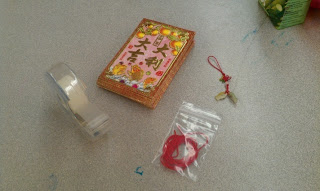I remember
when I was a child, I would follow my grandma to the garment factory or 衣廠 (ji1 cong2 in Cantonese, yi1 chang3
in Mandarin – I guess the term is the same in Mandarin) where my grandma worked
in Chinatown, NY. To pass the time, my grandma would give me a piece of paper
and ask me to snip triangles along the sides of the folded paper with a
scissor. In the end, I made a lot of paper snowflakes in different variations.
I suppose I had my 剪紙 / 剪纸 introduction
early on in life.
What we actually learned recently in class is
how to create the Chinese characters: 春
(ceon1 in Cantonese, chun1 in Mandarin) and 囍
(hei2 in Cantonese, xi3 in Mandarin). 春
means “spring.” Chinese people typically hang a 春 paper cut during Chinese New Year because
Chinese New Year is the Spring Festival. 囍 or
雙喜/双喜
means “double happiness” where good things come in doubles. This paper cut is
especially used and taped to the doors or walls during weddings since weddings
represent the happiness of the bride and groom.
Unlike my
other arts-and-craft projects on this blog, I will not be making a PDF file
since this project is fairly easy to do and I am not expert enough to offer any
valuable advice. Thanks to Hung, our Reading and Writing and Cantonese I and II
instructor at ALESN, and his friend Sophia, for teaching us how to paper cut. Sophia even earned a certificate in paper cutting, which she proudly displays in the back of her portfolio.
Materials needed for paper cutting:
·
A sharp pair of small scissors is ideal.
·
Thin colored paper (origami paper works well too.)
·
Pencil
·
Eraser
How to make a 春 paper cut:
Ideally,
if you want to be traditional, red colored paper is preferred to scare away
evil spirits. In my case, though, I used a piece of origami double-sided
colored paper.
1)
Fold
colored paper in half.
2)
Draw
or stencil in (if you have a stencil) half of the 春 character on the inner side of the
fold with a pencil. Please don't follow my ugly picture below. I was free styling.
3)
Cut
along the pencil line. If the rectangular spot on the bottom right, that is
left-half of the 日 character, is too difficult to cut
due to its small size, then try to cut like the number four, 四 by
cutting a triangle in the middle first and then snipping off the upper sides
last.
4)
Erase
the pencil lines. Open the paper up and wallah, you have a 春 paper
cut!

How to make a 囍 paper cut:
Follow the
instructions above except the sketch or stencil would look something like this:
In order
to cut the two 口 boxes in the middle, cut the whole stencil out first
and then fold those 口 parts
in half in order to cut 口.
At least that is what I did in order to achieve a close-to- perfect cut.
The end
result:


I colored
mine blue because it was the only marker I had at the time. Leaving the paper
white reminds me of a funeral.
We can
continue making more characters as long as the characters are symmetrical
though I guess pro cutters will know how to make a design even if the design is
not symmetrical. I’m sure professionals also use an X-Acto knife to cut the paper as well.
After my fun day at ALESN, I went back to my
grandma’s apartment and gave her my 春
paper cut. Then, we had dinner. Coincidentally, during dinner time, my grandma
and I watched an episode of the Hong Kong TVB series, Beauty at War aka War and
Beauty 2 (金枝慾孽貳/金枝欲孽贰 – gam1 zi1 juk6 jip6 ji6 in Cantonese jin1 zhi1
yu4 nie4 er4 in Mandarin) where the two consorts Consort Yue (played by Sheren
Teng) and Consort Dowager Shun (played by Christine Ng) were paper cutting in
episode 18.
 |
| Screen captured from Gooddrama.net |
After being upset, Consort Yue left with her finished paper cut of four beautiful characters: 榮華富貴 (wing4 waa4 fu3 gwai3 in Cantonese, rong2 hua2 fu4 gui4 in Mandarin), which means “glory and weath.”
 |
| Screen captured from Gooddrama.net |
 |
| Screen captured from Gooddrama.net |
 |
| Screen captured from Gooddrama.net |
Well, I wasn't sure of the story line since I am not following this drama, but it was a real interesting scene. Hopefully, you won't have to go through this mishap. Happy paper cutting!















































